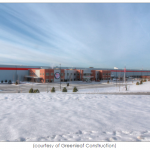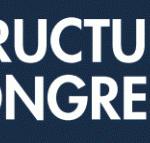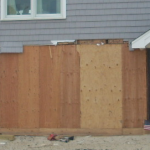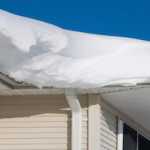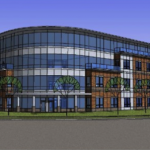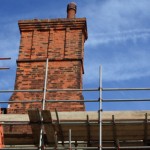
What To Know When Building in Flood Insurance Zones
The recent release of preliminary Flood Insurance Rate Maps (FIRMs) by the Federal Emergency Management Agency (FEMA) has left people with many questions. The new maps, which are used to set flood insurance zone rates for property owners inside the affected area, are not finalized, but changes are significant for those currently residing in flood zones or those planning to build within flood zones.
Below we attempt to answer a few of the most frequently asked questions about the new maps and the impact new flood zones could have on new and existing structures.
When will the FEMA preliminary maps become final?
It varies by State. According to Jennifer Gilbert, the NH NFIP Floodplain Coordinator, it can take about a year or more for the preliminary maps become final. Each town or city is allowed a period of time to appeal the maps. The FEMA map process includes a 90-day appeal period. A successful appeal may delay the adoption of the maps more. In the Seacoast of NH, we should expect the preliminary maps to become final around the fall of 2015.
If part of my property has crosses into a V-zone, do I need to design to V-zone standards?
A flood zone for a house is based upon the footprint of the house and any attached structures. Property lines do not matter. If any portion of a structure including any attachments such as decks and stairs are proposed or located in a V-zone, then any new construction or substantial improvements to a structure must comply with V-zone requirements.
What if only my front deck is in a V-zone, do I need to design to V-zone standards?
The only exception is if the deck is not structurally attached to the house. In this situation, only the deck is considered in a V-zone and the house would be considered in the other zone.
If a structure lies within multiple zones, the most stringent zone requirements must be used for the entire structure. Even though a deck would not be covered by flood insurance, a portion of any structure sited inside a stricter zone requires the entire structure to meet the stricter zone requirements. This is where proper planning and design comes into play. It would be wise to have an accurate survey of your property prior to design and construction. Additionally, the proposed construction requires a permit from the community. If there is a question regarding interpretation of the rules, meeting with the involved parties during preliminary planning is highly recommended.
What if I financially don’t need flood insurance for my house? Can I ignore the requirements?
Towns and cities must adopt specific ordinances to be a part of the National Flood Insurance Program (NFIP). These ordinances do not allow for the waiving of requirements where a homeowner chooses to self-insure. It is a law that must be followed. This is because home ownership is temporary. A future buyer of your house might require flood insurance to satisfy a mortgage lender. Additionally, homes located in V-zones will experience large forces from wave action. A structure that has broken free from its foundation might become a hazard to the surrounding homes built to meet the standards. More likely, parts of a structure not secured properly might become projectiles and cause harm to property or people. For these reasons, all structures located within a flood zone shown on FEMA’S MAP and in a community that participates in the NFIP must meet the floodplain requirements contained in the community’s ordinance.
I think I’m in a flood zone, but my town is really small and no one monitors these requirements. What will happen if I do not build to the flood zone standards?
If a structure is built in the FEMA floodplain area and it does not comply with the community’s floodplain regulations and a lender is requiring flood insurance, the premium for that policy will be more expensive than if the structure is built in compliance. Flood insurance rates are directly tied to how a structure in a floodplain area is built. Even if the property owner who builds a non-compliant structure in the floodplain is not required to have a flood insurance policy, the property will most likely be affected when they try to sell the non-compliant structure to a buyer who must have a flood insurance policy. Construction that ‘sneaks’ through the building vetting process is not ‘grand-fathered’ from meeting NFIP requirements. The cost of the policy for a non-compliant structure or to bring a structure into compliance may deter buyers.
Besides the flood insurance impact on a specific property owner, if FEMA or the State’s NFIP Coordinator determines that a community that participates in the NFIP is not enforcing their floodplain regulations and the NFIP requirements, the community could face suspension from the NFIP. If a community were suspended from the NFIP, NFIP flood insurance would no longer be available to residents in that community. If, after a community is suspended from the NFIP, and a lender still requires a property owner to have a flood insurance policy in place as a condition of a loan or mortgage, the property owner would have to obtain a flood insurance policy from the private market, which is usually more costly and harder to obtain than an NFIP policy.The town of Rye, NH recently went through an audit and was found to have approved multiple homes for construction that did not meet flood zones requirements. Read about it here.
While these Flood Zone maps may be only preliminary, it’s important to be prepared for the potential impact they may have on your property now and in the future. If you’re building in a flood zone be sure to get educated on all of the Flood Zone designations and why you should conduct a flood risk assessment before building.
Have questions? Contact Summit Engineering today.







